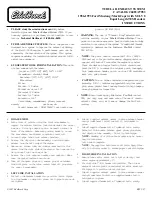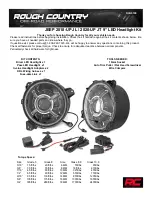
I01�High-voltage�Components
3.�Electric�Motor
39
The�parking�lock�module�functions�at�a�driving�shaft.�At�the�end�of�the�driving�shaft�there�is�a�bar�which
is�turned�about�70�degrees�by�the�revolution�of�the�driving�shaft.�As�a�result,�the�parking�lock�pawl�is
inserted�into�the�parking�lock�gear�and�the�transmission�input�shaft�is�blocked.�By�resetting�the�bar
the�parking�lock�pawl�is�released�again,�pulled�from�the�parking�lock�gear�by�the�return�spring�and�the
transmission�input�shaft�is�unlocked.�The�driving�shaft�is�held�in�the�two�positions,�"engaged"�and
"disengaged",�by�a�fixing�element.�The�fixing�element�locks�into�the�respective�recesses�at�the�cam
disc.�The�rod�cannot�be�moved�from�these�positions�by�movements�or�forces�from�the�transmission.
Both�positions�are�stable�without�the�supply�of�auxiliary�power.�It�is�also�said:
The�parking�lock�of�the�I01�is�bi-stable.�This�means�it�requires�external�energy�in�order�to�change�the
condition�of�the�parking�lock.
Energy�is�required�for�both�disengaging�and�engaging�the�parking�lock.�In�BMW�vehicles�with�a
conventional�engine�and�automatic�transmission�energy�is�only�required�for�disengaging�the�parking
lock.
The�actuator�of�the�parking�lock�is�a�direct�current�electric�motor�with�gear/worm�wheel�transmission
and�two�position�sensors.�All�these�parts�are�located�in�the�housing�and�form�one�unit.�The�parking
lock�module�is�secured�using�three�raised�head�Torx�screws�on�the�transmission�housing�and�for�now
is�not�replaced�in�BMW�Service.
The�parking�lock�module�is�connected�to�the�parking�lock�via�a�multi-tooth�connection�of�the�actuator/
driving�shaft�at�the�transmission�interface.�
Attention:
�The�vehicle�must�be�secured�against�rolling
away�by�other�measures�(e.g.�by�operating�the�parking�brake�or�positioning�a�wedge).
The�electric�motor�in�the�parking�lock�module�is�activated�directly�by�an�output�stage�in�the�electrical
machine�electronics.�The�output�stage�is�current-limited�to�protect�against�damage�by�a�short�circuit.
In�order�not�to�overload�the�electric�motor,�the�power�consumption�is�also�measured�and�a�current
limitation�performed�in�the�software�of�the�electrical�machine�electronics.
The�electric�motor�is�supplied�with�current�until�the�position�sensors�display�that�the�parking�lock�has
adopted�the�desired�condition.�The�position�sensors�work�according�to�the�hall-effect�principle�and
record�the�movement�in�the�transmission�of�the�parking�lock�module.�As�the�function�of�the�parking
lock�is�relevant�for�safety,�two�redundant�position�sensors�are�used�to�achieve�the�requested�reliability.
If�a�sensor�signal�fails�due�to�a�fault,�an�active�engaging�or�disengaging�procedure�can�be�completed�as
a�result�of�the�redundancy.�The�position�sensors�generate�signals�which�are�evaluated�by�the�electrical
machine�electronics.
As�the�position�sensors�record�the�movement�of�the�electric�motor�in�the�parking�lock�module�and�not
the�movement�of�the�actual�parking�lock�mechanics,�an�initialization�has�to�be�performed�as�a�one-off
so�that�a�conclusion�can�be�drawn�about�the�condition�of�the�parking�lock�from�the�sensor�signals.
The�following�graphic�shows�the�electrical�structure�of�the�parking�lock�module�and�the�electrical
connection�for�the�electrical�machine�electronics.
Содержание I01
Страница 1: ...Technical training Product information BMW Service I01 High voltage Components...
Страница 49: ...I01 High voltage Components 3 Electric Motor 43 System wiring diagram for the drive control...
Страница 178: ...I01 High voltage Components 12 Technical Safety Precautions 172 Main wiring diagram for high voltage interlock loop...
Страница 189: ......
Страница 190: ...Bayerische Motorenwerke Aktiengesellschaft Qualifizierung und Training R ntgenstra e 7 85716 Unterschlei heim Germany...
















































